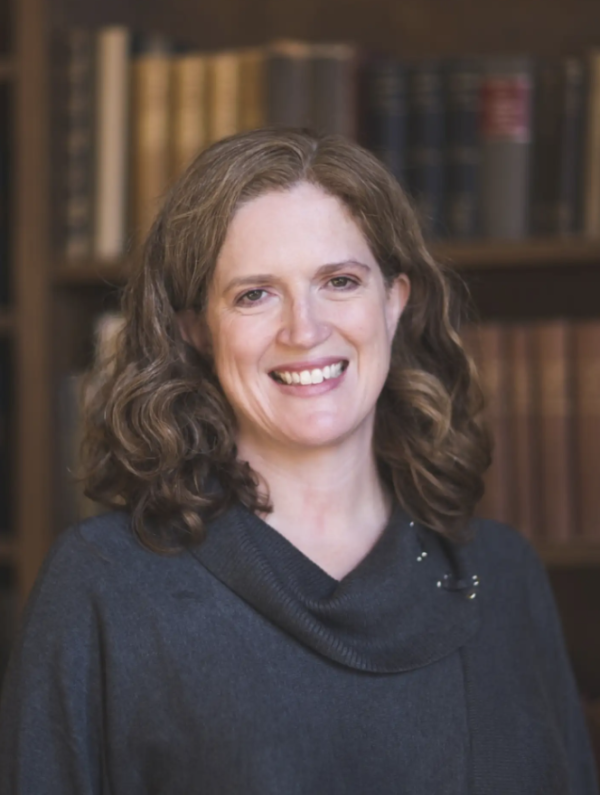You have /5 articles left.
Sign up for a free account or log in.
Whenever someone from the learning design community moves into an institutional leadership role, I take note. In this case, the story is close to home. My friend, colleague (and new boss) Erin DeSilva has just been appointed as Dartmouth’s inaugural associate provost for digital and online learning. While Erin’s instincts are to deflect attention from herself and instead highlight the work and her team, I convinced her that the broader learning design community would benefit from learning about her new role and career path.

Q: Your new role combines leadership in digital and online learning. Why was it important to you that the work on residential classes be integrated with Dartmouth’s online learning portfolio?
A: I think that it’s critical that we do the work of supporting Dartmouth’s online and residential learning as one core team because of who we are at Dartmouth: a community that deeply values interpersonal connections and immersive learning experiences. By working across programs, departments, and student groups, our team is able to carry shared lessons and values into every conversation and every project.
Our work as educational technologists, media specialists, and learning designers has always been boundary-spanning, so we are familiar with what it takes to bring worlds together. Keeping the team’s portfolio focused on faculty development, program development, course design and educational technology support ensures that our faculty are able to teach in innovative, effective ways, regardless of where their students are located.
Through our relationships with faculty, deep understanding of effective teaching practices, technological knowledge and commitment to problem-solving, this team can experiment with and implement teaching practices that enhance student engagement, personalize the learning experience and foster a deeper understanding of the material. By managing the technology that is used for this teaching, we are able to enhance faculty capability no matter where their classroom may be.
Our team is also well-trained in a set of principles and practices that are core to all of Dartmouth’s educational offerings, including the creation of accessible, inclusive pedagogy. Our mission is to empower Dartmouth’s exceptional teaching through our pedagogical and technological expertise, which is needed by all of our faculty.
Finally, these worlds need each other. The online learning community needs to learn from the intimacy and community that residential learning fosters, and the residential learning community has a lot to learn about the flexibility and inclusivity afforded in the online environment. Our team is committed to ensuring these learning communities benefit each other here at Dartmouth.
Q: Working as a learning designer may be one of the most rewarding jobs in all of higher education, but the role comes with many challenges, among them being a legible long-term career path for broader institutional responsibility and impact. Can you share your own career journey?
A: I was talking yesterday with an undergraduate student who plans to work in higher education teaching and learning, and I can tell she’s going to have a big impact. I was nowhere near that confident at her age, and I definitely did not see a clear path ahead.
I got a taste of education in the informal setting, then taught in a high school for a year, which remains the most difficult job I’ve ever done. Following that, I worked in education at the Museum of Science in Boston, where I developed an approach that I still use today: inspire learners and engage colleagues with enthusiasm.
Informal education and higher education have a lot in common—there are deep learning experiences that have a cycle, and you can take what you learn from one experience to the next project, regardless of the content area. Providing teacher professional development was a particular passion of mine, and when I was moving from an ed-tech agency in Ohio back to Massachusetts, I was lucky that a director of academic technology had the tiny misconception that K-12 teachers and higher ed faculty needed the same sorts of professional development, so she took a chance on me.
I started in higher education in 2008, when there was a trend to rename educational technologists with the title instructional designer, even though the job description didn’t often change. So while I was changing clicker batteries and running SQL queries in the Blackboard database in between workshops, I also was learning how online learning worked at Worcester Polytechnic Institute, another great school with a long history of distance learning that had a lot to teach me about project-based learning.
It was such a gift to start working in higher education in that environment, with that particular team. I discovered I especially loved the design part of the job because, as you say, it’s the most rewarding job in higher education. And I met you! I also went back to graduate school to learn more formally at that time, which was a challenge with twin one-year-olds, and I am very lucky to have a great support system.
As far as that part about broader institutional responsibility, I have another friend to thank for that. We were doing a course design institute here at Dartmouth a while back, and as he worked diligently, taking valuable time to ensure a good learning experience for his students, he asked me, “This is what Dartmouth expects of us, right? Leadership believes in this?” I assured him that, of course, his efforts would be worth it, but it occurred to me at that time that I ought to ensure what I was saying was true. I wanted to be certain that Dartmouth leadership understands what it takes to build a quality curriculum, and I needed a seat at some tables.
So when I’ve been asked to take leadership roles, I’ve said yes. It does mean that I get to work less directly with faculty and students, but the trade-off—being able to support talented, brilliant, committed team members—is absolutely worth it.
Q: What advice do you have for colleagues in the learning design community who aspire to university leadership roles? What sorts of skills, networks and experiences should they develop?
A: Never stop learning. If your comfort zone is technical, reach into the pedagogy world and ask questions. If you’re more experienced as a teacher, find a way to develop some technical chops. You never know what the gateway will be in a particular relationship, and being able to pivot and draw on a diverse skill set for what’s needed is really helpful.
Meet everyone on campus, and ask what they do, what their challenges are, and especially how they work through them. Build connections between others, too—often, our superpower is knowing when we aren’t the one to solve the problem.
Designers are natural translators, which is a critical skill in higher education. As for networking, my advice would be not to latch on to just one network. I’ve found what I needed in various communities at different times, including Educause, OLI, POD, UPCEA and others. And for those of us in the northeast part of the U.S., NERCOMP has something for everyone—I highly recommend it!




